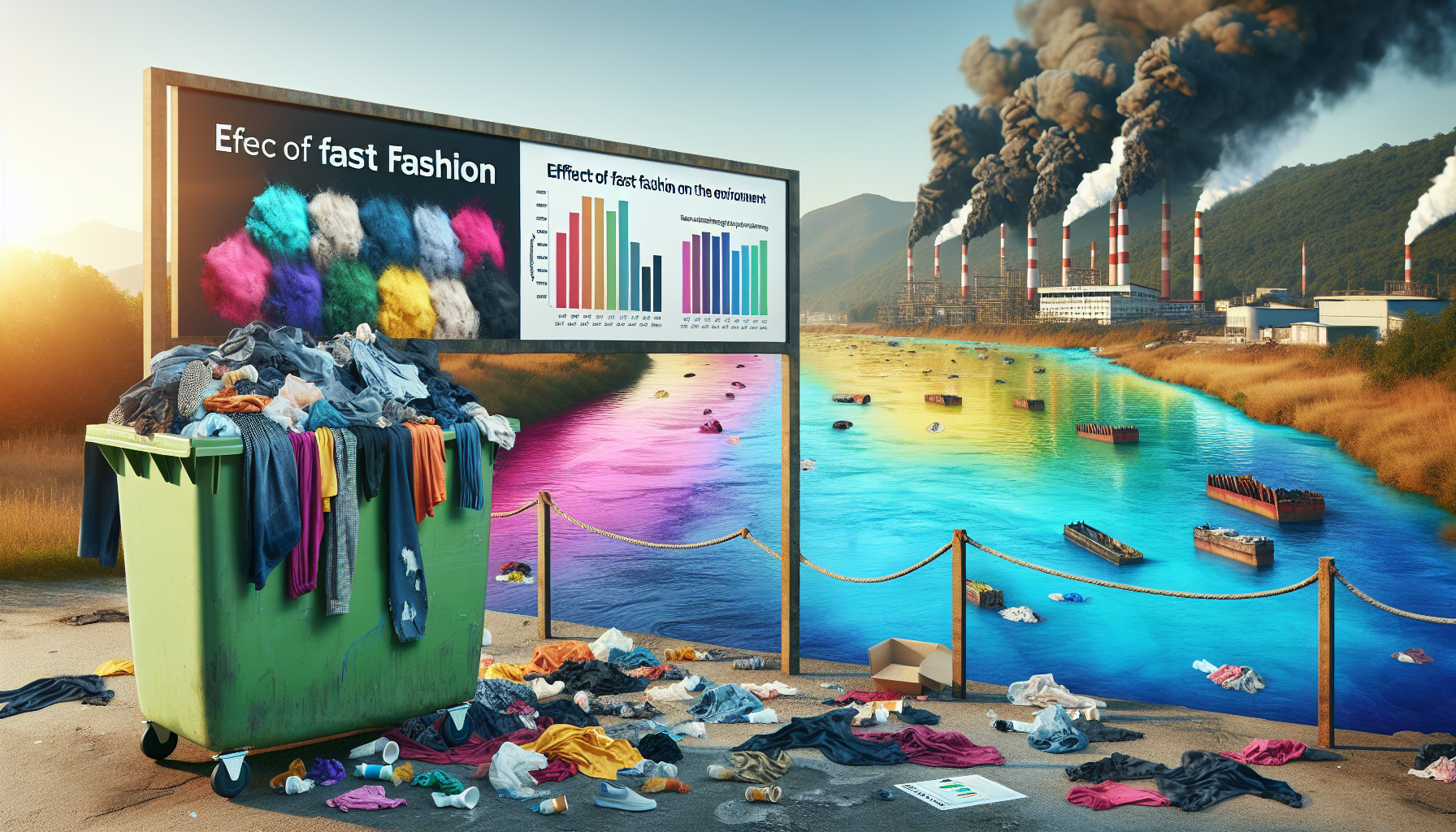Introduction
Fast fashion has revolutionized the apparel industry, providing shoppers with on-trend clothes at affordable prices; however, its environmental impact has become a cause for global concern. As consumers continue to buy and discard clothing at an unprecedented rate, we are starting to grapple with the severe repercussions on the ecosystem. This article delves into the multifaceted environmental consequences of fast fashion, shedding light on a pressing issue that calls for immediate action.
The Speedy Cycle of Consumption and Waste
The fast fashion model is predicated on rapid production cycles, encouraging consumers to continually purchase new items to keep up with the latest styles. Unfortunately, this leads to a significant increase in the quantity of clothing produced and, consequently, the waste generated. Most consumers wear items only a few times before discarding them, which considerably shortens the lifespan of clothing. This disability culture has not only exacerbated the amount of textile rubbish but has also inflated the need for landfill space, where much of the discarded clothing eventually ends up.
Transitioning from production to waste, it becomes clear that the apparel industry needs sustainable change. Without a shift in both manufacturing and consumer habits, the environmental toll of fast fashion will only continue to grow.
The Environmental Cost of Production
The environmental cost of producing fast fashion items is extensive. The industry relies heavily on non-renewable resources, including oil, to produce synthetic fibers, such as polyester, and copious amounts of water to cultivate cotton and the dyeing process of fabrics. For instance, it can take more than 2,000 gallons of water to make a single pair of jeans.
Moreover, the production of fast fashion garments frequently employs harsh chemicals, dyes, and finishes, which can lead to soil degradation and water pollution. These substances can seep into the water supply, negatively impacting aquatic life and the health of communities surrounding manufacturing sites. As the fast fashion industry continues to boom, so does its environmental footprint, calling for a review of production methodologies and resource utilization.
Carbon Emissions and Climate Change
The apparel industry accounts for a substantial portion of the world’s carbon emissions. From long supply chains and energy-intensive production methods to transportation and delivery processes, each fast fashion life cycle stage contributes to greenhouse gas emissions. The reliance on cheap, coal-powered energy in manufacturing countries further exacerbates this issue, entrenching the sector’s role in climate change.
In an era where the effects of global warming are increasingly visible, the correlation between fast fashion and its carbon footprint cannot be overlooked. There is a pressing need to reconsider the entire value chain to mitigate its effect on the environment.
The Price of Disposal
Once consumers tire of their trendy purchases, disposal becomes another environmental hazard. Many fast-fashion garments are not designed to be durable, so they are unlikely to be suitable for second-hand use. While some items end up in thrift stores, many find their way to landfills or incinerators. As most clothing contains synthetic fibers, this releases toxic gases and persistent environmental pollutants. The lack of biodegradability of these materials means they linger in the environment for decades, releasing microfibers that contaminate water and soil.
Finding effective recycling and upcycling methods for textile materials is a crucial challenge that must be addressed to temper the environmental damage caused by clothing disposal.
A Shift Towards Sustainability
In response to the mounting evidence of their environmental impact, some fast fashion brands are beginning to adopt more sustainable practices. These initiatives point toward a potential positive change in the industry, from reducing water usage and utilizing eco-friendly materials to investing in recycling technologies.
Sustainable fashion movements are also critical in driving awareness and altering consumer behavior. Encouraging individuals to buy less, choose well, and make clothes last by supporting sustainable brands or opting for second-hand and vintage clothing could help reduce the strain fast fashion places on the environment.
Conclusion
The effect of fast fashion on the environment is of considerable magnitude. With its vast water consumption, chemical pollution, carbon emissions, and waste, the industry poses a significant threat to the planet. However, the burgeoning sustainable fashion movement provides a glimmer of hope. Consumers and companies must take responsibility and strive for a more resource-conserving, less wasteful clothing industry to ensure a healthier environment. It is not just about changing fashion trends but transforming the ethos of clothing consumption for the well-being of our planet.

